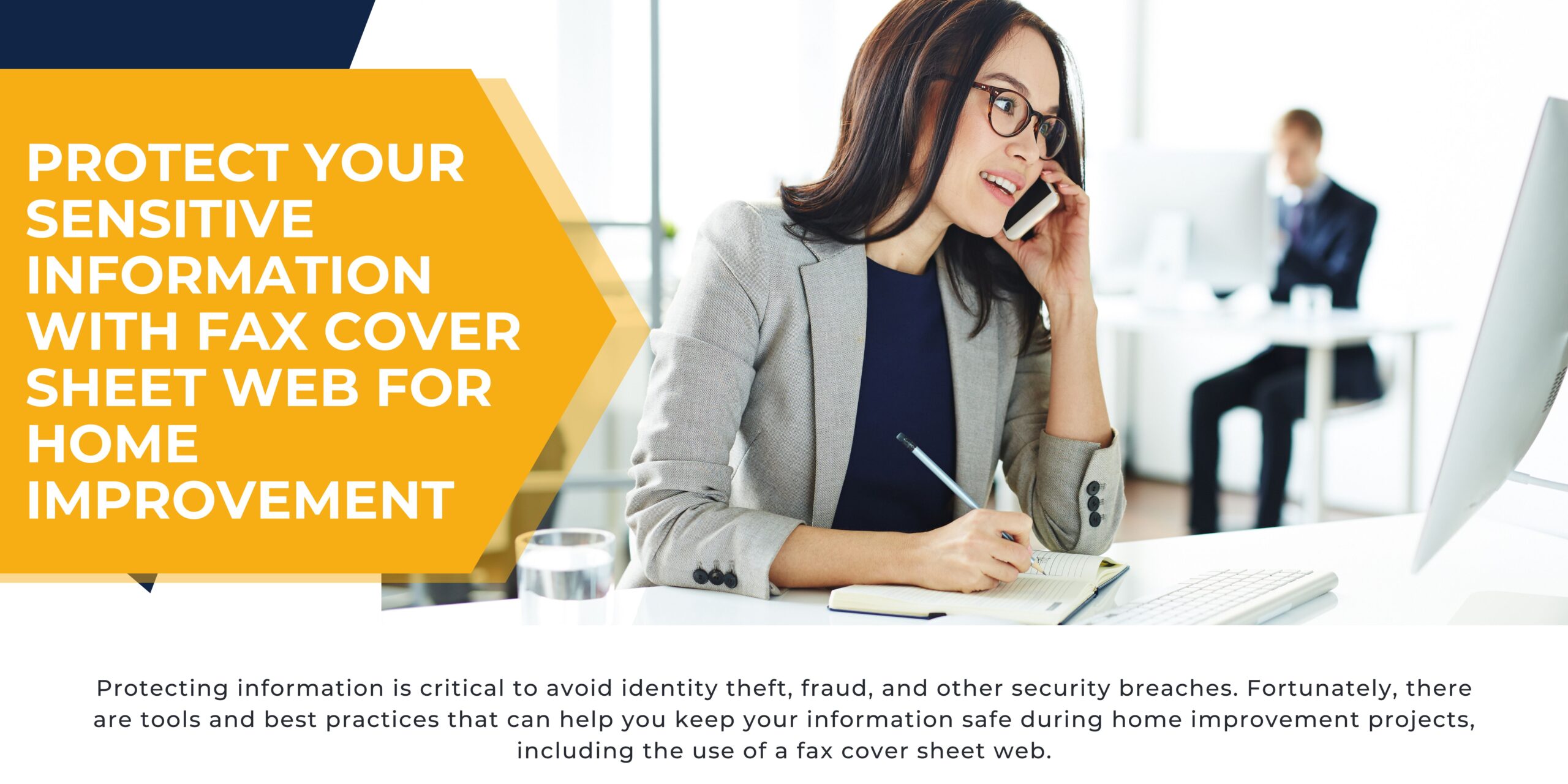Home improvement projects are a great way to add value to your property and make your living space more comfortable and functional. However, they also involve handling sensitive information, such as financial data, personal information, and legal documents. Protecting this information is critical to avoid identity theft, fraud, and other security breaches. Fortunately, there are tools and best practices that can help you keep your information safe during home improvement projects, including the use of a fax cover sheet web.
In this article, we will explain what a fax cover sheet web is, how it works, and why it is beneficial for home improvement projects. We will also provide step-by-step instructions for using a fax cover sheet web, as well as best practices for protecting sensitive information during home improvement projects.

What is a Fax Cover Sheet Web?
A fax cover sheet web is an online tool that allows you to create a cover sheet for a fax transmission. A cover sheet is a document that provides information about the sender, recipient, and content of a fax, similar to a cover letter for a job application. A cover sheet typically includes the following elements:
Sender’s name and contact information
Recipient’s name and contact information
Date and time of transmission
Number of pages transmitted
Brief description of the content
Confidentiality notice, if applicable
Using a cover sheet for fax transmissions is a best practice for several reasons. First, it helps the recipient identify the sender and the purpose of the fax. Second, it allows the sender to include additional information or instructions that may not be evident from the content alone. Third, it can help protect sensitive information by warning the recipient that the fax contains confidential or privileged material and should be handled accordingly.
A fax cover sheet web allows you to create a cover sheet online, using a web-based form. This means you don’t need to have a physical cover sheet or a fax machine to send a fax. Instead, you can create the cover sheet, attach the document(s) you want to fax, and send them securely over the internet. The recipient will receive the fax as if it were sent from a traditional fax machine, and the cover sheet will be included in the transmission.
How to Use a Fax Cover Sheet Web for Home Improvement Projects
Using a fax cover sheet web for home improvement projects is a straightforward process. Here’s a step-by-step guide:
Choose a reputable fax cover sheet web provider
There are several fax cover sheet web providers available online, but not all of them are trustworthy or secure. Look for providers that offer encryption, SSL certificates, and other security features to protect your information. Check their reviews and ratings, and make sure they have a good reputation in the industry.
Create a cover sheet
Once you’ve chosen a provider, create a cover sheet for your fax transmission. The cover sheet should include your name and contact information, the recipient’s name and contact information, and a brief description of the content. You can also include a confidentiality notice if the information is sensitive.
Attach the document(s) you want to fax
After creating the cover sheet, attach the document(s) you want to fax to the online form. Make sure they are in the right format (e.g., PDF, Word, Excel) and that they are not too large for the provider’s file size limit.
Send the fax
Once you’ve attached the document(s), review the cover sheet and the content to make sure everything is correct. Then, click on the “Send” button to send the fax. The recipient will receive the fax along with the cover sheet, and you will receive a confirmation of the transmission.
Follow up with the recipient
After sending the fax, it’s a good practice to follow up with the recipient to confirm that they received it and that the information is complete and accurate. This can help prevent misunderstandings, errors, or delays in the project.
Best Practices for Protecting Sensitive Information During Home Improvement Projects
Using a fax cover sheet web is just one of the best practices for protecting sensitive information during home improvement projects. Here are some additional tips:
Minimize the amount of information you share
Only share the information that is necessary for the project and with the people who need it. Don’t disclose more personal or financial information than necessary, and avoid using public or unsecured networks to access or transmit sensitive data.
Use strong passwords and encryption
Use strong and unique passwords for your online accounts, and enable two-factor authentication whenever possible. Also, use encryption software to protect your data from unauthorized access or interception.
Keep physical documents secure
If you have physical documents that contain sensitive information, keep them in a locked cabinet or safe. Don’t leave them lying around or dispose of them without shredding them first.
Check the credentials of contractors and vendors
Before hiring a contractor or vendor for your home improvement project, check their credentials, licenses, and references. Also, make sure they have a privacy policy and a security plan in place to protect your information.
Monitor your accounts and credit reports
Regularly review your bank and credit card statements, and report any suspicious activity or unauthorized transactions immediately. Also, monitor your credit reports for any signs of identity theft or fraud.
Conclusion
Home improvement projects can be exciting and rewarding, but they also involve handling sensitive information that needs to be protected. Using a fax cover sheet web is a simple and effective way to ensure the security of your information during fax transmissions. However, it’s important to follow other best practices, such as minimizing the amount of information you share, using strong passwords and encryption, keeping physical documents secure, checking the credentials of contractors and vendors, and monitoring your accounts and credit reports. By taking these steps, you can enjoy your home improvement project with peace of mind and confidence in the security of your information.
